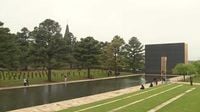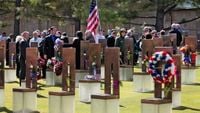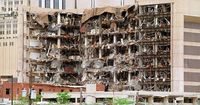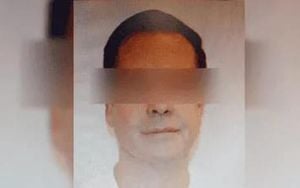On Saturday, April 19, 2025, Oklahoma City marks the 30th anniversary of the Oklahoma City bombing, the deadliest homegrown attack in United States history, which killed 168 people and injured hundreds more. The event will be commemorated with a public ceremony at the Oklahoma City National Memorial Museum, featuring the reading of the names of the victims, remarks from family members and survivors, and a keynote address by former President Bill Clinton.
The bombing occurred at the Alfred P. Murrah Federal Building, which housed regional offices for several federal agencies, including the Social Security Administration, the FBI, and the Secret Service. Notably, America’s Kids Daycare was located on the second floor, where many of the youngest victims were present. The bomb, a deadly combination of ammonium nitrate and diesel fuel packed into a rental truck, devastated the building, shearing off about a third of it and causing floors to collapse. Tragically, 19 of the deceased were children, with the youngest victim being just three months old.
Timothy McVeigh, a former U.S. Army soldier, orchestrated the bombing, motivated by a deep-seated anger towards the federal government exacerbated by events such as the 1993 Waco siege and the Ruby Ridge standoff. He was joined by accomplice Terry Nichols, who helped him plan and build the bomb. McVeigh was convicted of 11 murder counts and executed by lethal injection in 2001, while Nichols is serving life in prison after being convicted of conspiracy and involuntary manslaughter.
The Oklahoma City bombing exposed Americans to the reality of violent extremism and anti-government sentiment on home soil. In the years following the attack, President Clinton signed an “antiterrorism” law in 1996, which toughened penalties for crimes targeting federal workers and allocated significant funding to expand counterterrorism efforts. In 2022, the Justice Department created a specialized unit to address the heightened threat posed by violent extremists in the U.S.
As survivors and families reflect on this day of darkness three decades later, many express concern that the anti-government rhetoric prevalent in today’s political climate could lead to further violence. The memorial site, which draws over 500,000 visitors annually, serves as a poignant reminder of the tragedy and its impact on the community.
The Oklahoma City National Memorial Museum was established to honor the lives lost and educate future generations about the dangers of political violence. “The memorial museum was created to remember and teach the brutality of the attack and the tenderness of the response,” said Kari Watkins, CEO of the museum. “We work to teach people to meet those impacted, those who were killed, those who survived, and those who were changed forever.”
Among the many stories preserved at the memorial is that of Lucio Aleman, Jr., a safety engineer who died at 33, and Teresa Alexander, a nurse’s assistant who was picking up her son’s Social Security card when the bomb detonated. Their biographies, along with those of other victims, can be found on the memorial museum’s website, reminding visitors of the human cost of this tragedy.
The memorial itself features a reflecting pool and 168 empty chairs, each representing a victim, with smaller chairs symbolizing the children lost. The gates to the memorial mark the times of 9:01 a.m. and 9:03 a.m., while the reflecting pond represents 9:02 a.m., the moment of the explosion. A “Survivor Tree,” an American elm that withstood the blast, stands on a small hill, symbolizing resilience and the enduring spirit of the community.
As the anniversary approaches, many survivors, like PJ Allen, reflect on their experiences. Allen, who was just 18 months old at the time of the bombing, survived despite suffering severe burns and injuries. He now works as an avionics technician at Tinker Air Force Base in Oklahoma City. “I’m too lucky to be alive to feel resentment about my situation,” he said. “This is my normal.”
Edye Raines, who lost her two sons, Chase and Colton, in the bombing, recalls the day with a mix of sorrow and strength. “I think those are little signs,” she said, reflecting on the moments that remind her of her boys. Raines emphasizes the importance of remembering the victims and the lessons learned from that day, choosing to live in gratitude rather than anger.
The 30th anniversary ceremony will not only serve as a remembrance of those lost but also as a call to action against violence. “When we remember, we honor those impacted,” said Dr. Susan Chambers, chair of the memorial’s foundation. “It reminds us of the incredible acts of so many to help.”
As Oklahoma City continues to heal and grow, the legacy of the bombing remains a vital part of its history. The memorial and museum strive to keep the story alive, ensuring that future generations understand the impact of violence and the importance of compassion and community.
The Oklahoma City bombing serves as a stark reminder of the potential for violence within society, but it also highlights the resilience and strength of a community that has come together to heal and remember. As the memorial continues to welcome visitors and educate on the dangers of political extremism, it stands as a testament to the enduring spirit of those who lost their lives and those who continue to fight for peace and understanding.








